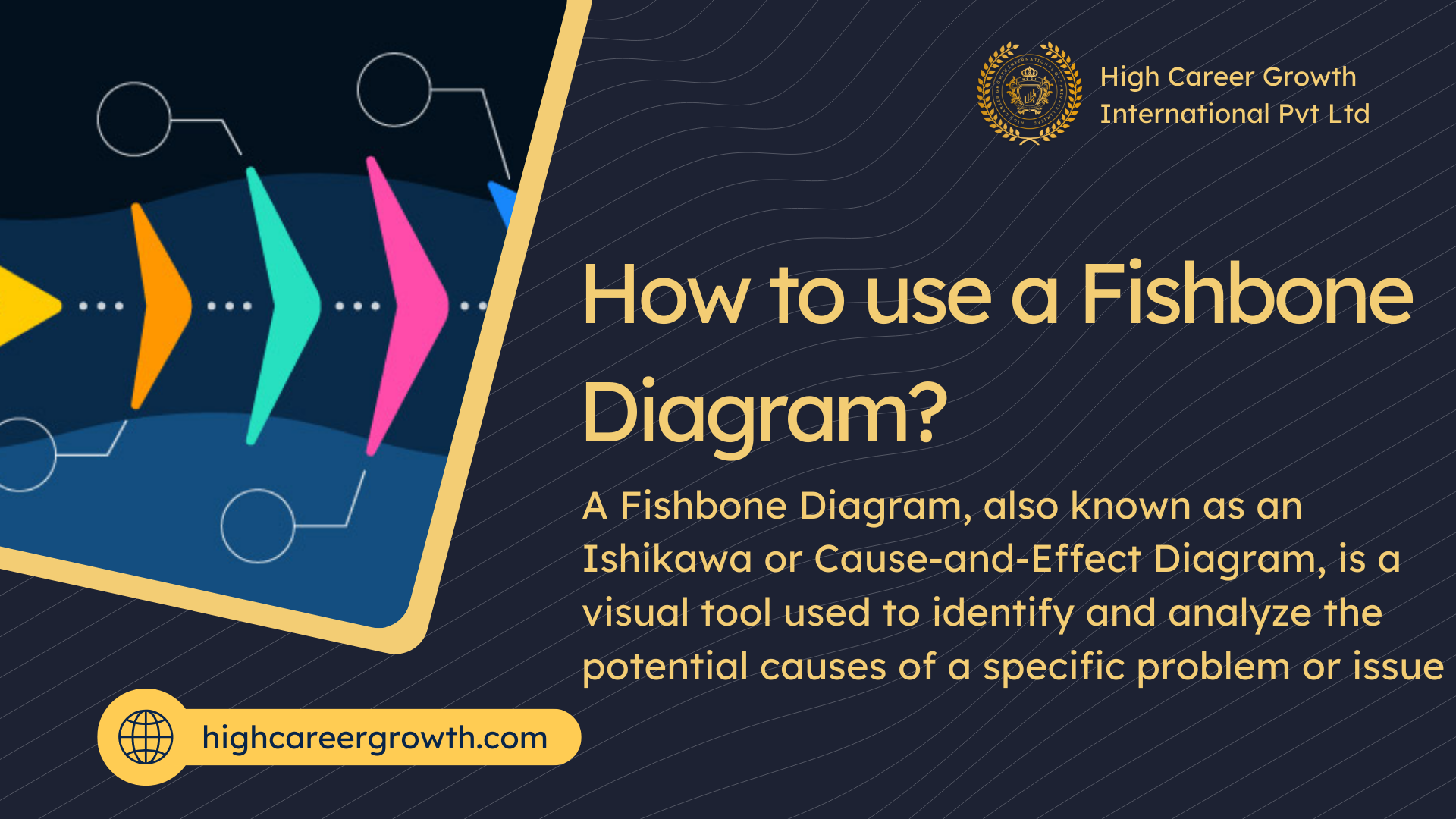ABSTRACT:
The Fishbone Diagram(G) is a tool for analyzing process dispersion. It is also referred to as the “Ishikawa diagram,” because Kaoru Ishikawa developed it, and the “fishbone diagram,” because the complete diagram resembles a fish skeleton. The diagram illustrates the main causes and subcauses leading to an effect (symptom). It is a team brainstorming tool used to identify potential root causes(G) to problems. Because of its function it may be referred to as a causeand-effect diagram. In a typical Fishbone diagram, the effect is usually a problem needs to be resolved, and is placed at the “fish head”. The causes of the effect are then laid out along the “bones”, and classified into different types along the branches. Further causes can be laid out alongside further side branches. So the general structure of a fishbone diagram is presented below.
ABSTRACT:
- The Fishbone Diagram(G) is a tool for analyzing process dispersion. It is also referred to as the “Ishikawa diagram,” because Kaoru Ishikawa developed it, and the “fishbone diagram,” because the complete diagram resembles a fish skeleton. The diagram illustrates the main causes and subcauses leading to an effect (symptom). It is a team brainstorming tool used to identify potential root causes(G) to problems. Because of its function it may be referred to as a cause and-effect diagram. In a typical Fishbone diagram, the effect is usually a problem needs to be resolved, and is placed at the “fish head”. The causes of the effect are then laid out along the “bones”, and classified into different types along the branches. Further causes can be laid out alongside further side branches. So the general structure of a fishbone diagram is presented below.
RELATED TOOLS:
- The Fishbone diagram could be applied when it is wanted to:
- Focus attention on one specific issue or problem.
- Focus the team on the causes(G), not the symptoms.
- Organize and display graphically the various theories about what the root causes(G) of a problem may be.
DESCRIPTION:
- Scatter diagram,
- Flowcharts Checksheets
BENEFITS:
- Displays relationships clearly and logically – The fishbone diagram captures the links and relationships among the potential causes and results displayed in the diagram. Categorized logically, the correlation can be understood at a glance.
- Shows all causes simultaneously – Any cause or causal chain featured on the fishbone diagram could lead to the problem. The fishbone diagram illustrates each and every possible reason in a single diagram, which is beneficial for in-depth analysis. This makes it a useful tool for presenting the problem and solutions to stakeholders.
- Involves Team in brainstorming – Edraw fishbone diagram is a great way to boost and structure brainstorming about the reasons for a certain result because it captures all the causes.
- Input for problem solving – Seeing the reasons in visual graph and exploring the root cause may stimulate your team to find out possible solutions to the problems.
- Maintains team focus – The fishbone framework can keep your team focused as you discuss what should be done to solve the problem or achieve a common goal. It helps to analyze every involved party. And it ensures that nobody is wasting energy chasing nonexistent problems.
PREREQUISITES:
- A problem is composed of a limited number of causes, which are in turn composed of sub causes.
- Distinguish these causes and sub causes is a useful step to deal with the problem.







